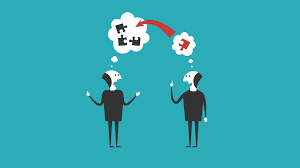How to Give Constructive Criticism: 6 Helpful Tips | Personal Excellence
Curated from: personalexcellence.co
Ideas, facts & insights covering these topics:
10 ideas
·4.71K reads
4
Explore the World's Best Ideas
Join today and uncover 100+ curated journeys from 50+ topics. Unlock access to our mobile app with extensive features.
3. Be Specific With Your Feedback
The more specific your feedback, the more actionable it is for the one receiving it. Example: Asking for an article on communication is vague while asking for one on public speaking is specific.
An specific feedback that doesn’t target the person is easier to understand and act upon.
214
505 reads
4. Comment On Actionable Things
To help people improve talk about things they can do something about, rather than those out of their control. Critiquing the former makes your criticism constructive; critiquing the latter makes the person feel bad as they can’t do anything about it, even if they want to.
Understand the person’s situation and his/her objectives, then provide your critique based on that. And if you need to talk about something out of their control, balance it out by talking about things they can control.
222
375 reads
5. Give Improvement Recommendations
Give recommendations on what the person can do to improve so they have a clear idea of what you have in mind and get a strong call-to-action.
With your recommendations, (a) be specific with your suggestions and (b) briefly explain the rationale behind the recommendation. Also, try to limit examples to one per point to make your case more impactful.
216
371 reads
6. Don’t Make Assumptions
Provide criticism within what you know as fact about the person and the subject. Avoid assumptions as they make you and the person look bad — especially when your assumption is wrong.
213
374 reads
Making Your Feedback Specific
- Focus more on objective points than subjective opinions. Saying “I don’t like it” is less helpful than stating the specific things you don’t like.
- Break your feedback into key points instead of giving it as one big lump.
- Give 1-2 specific examples of each point. Don't highlight every single example. The intention here is to (a) make the person aware of things they may be oblivious of and (b) illustrate what you mean.
211
363 reads
On Giving Constructive Criticism
Sharing and receiving feedback is necessary for improvement. If you have ideas on how someone can improve, don’t hold your ideas back, share your criticism constructively.
Of course, be sensitive to others’ feelings and offer feedback when you feel the other person is ready to take it. Else, you may come across as imposing your views on others, especially if you repeatedly tell them what to do without them requesting it.
229
443 reads
1. Use The Feedback Sandwich
Also known as PIP (Positive-Improvement-Positive), it consists of “sandwiching” a critic between two positive comments in the following manner:
- Start by focusing on the strengths — what you like about the item in question.
- Then, provide the criticism — things you don’t like and areas of improvement.
- Lastly, round off the feedback with (a) a reiteration of the positive comments you began with and (b) the positive results that can be expected if the criticism is acted upon.
325
579 reads
2. Focus On The Situation, Not The Person
- Comment on the issue, not the person. Example, “The clothes are dirty” and not “You are dirty.”
- Don’t make personal attacks. Comments like “I’m so tired of…” or “You’re so... ” come across as accusatory.
- Use passive voice instead of active to shift the attention from the person to the subject matter. Example: "You were bad." vs "What you did was bad."
- Share how it affects you instead of how bad it was to shifts the focus from the person and to yourself, which lets the person take a step back to evaluate the situation while giving insight to where you are coming from.
299
577 reads
Why The Feedback Sandwich Works
The feedback sandwich lets the receiver know that you recognize what they did right and that you are on their side, thus not attacking them. The receiver then becomes more receptive to your critique.
The feedback sandwich method is most appropriate when you are giving criticism to people you don’t know or don’t know well. Otherwise you may come across as very aggressive and rude if you just jump right into the critique.
224
381 reads
IDEAS CURATED BY
Alana F.'s ideas are part of this journey:
Learn more about communication with this collection
How to practice effectively
The importance of consistency
How to immerse yourself in the language
Related collections
Similar ideas
Read & Learn
20x Faster
without
deepstash
with
deepstash
with
deepstash
Personalized microlearning
—
100+ Learning Journeys
—
Access to 200,000+ ideas
—
Access to the mobile app
—
Unlimited idea saving
—
—
Unlimited history
—
—
Unlimited listening to ideas
—
—
Downloading & offline access
—
—
Supercharge your mind with one idea per day
Enter your email and spend 1 minute every day to learn something new.
I agree to receive email updates







